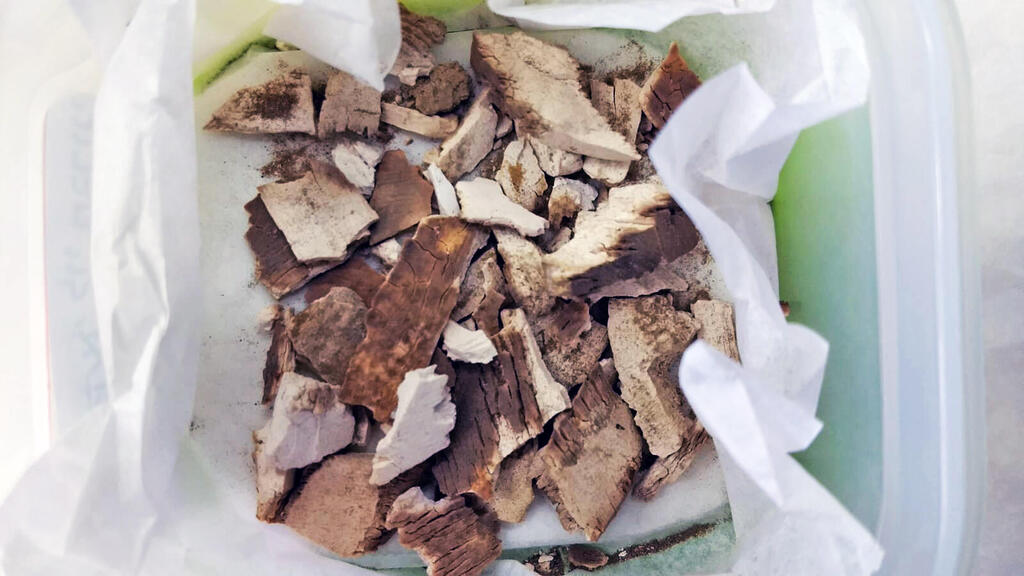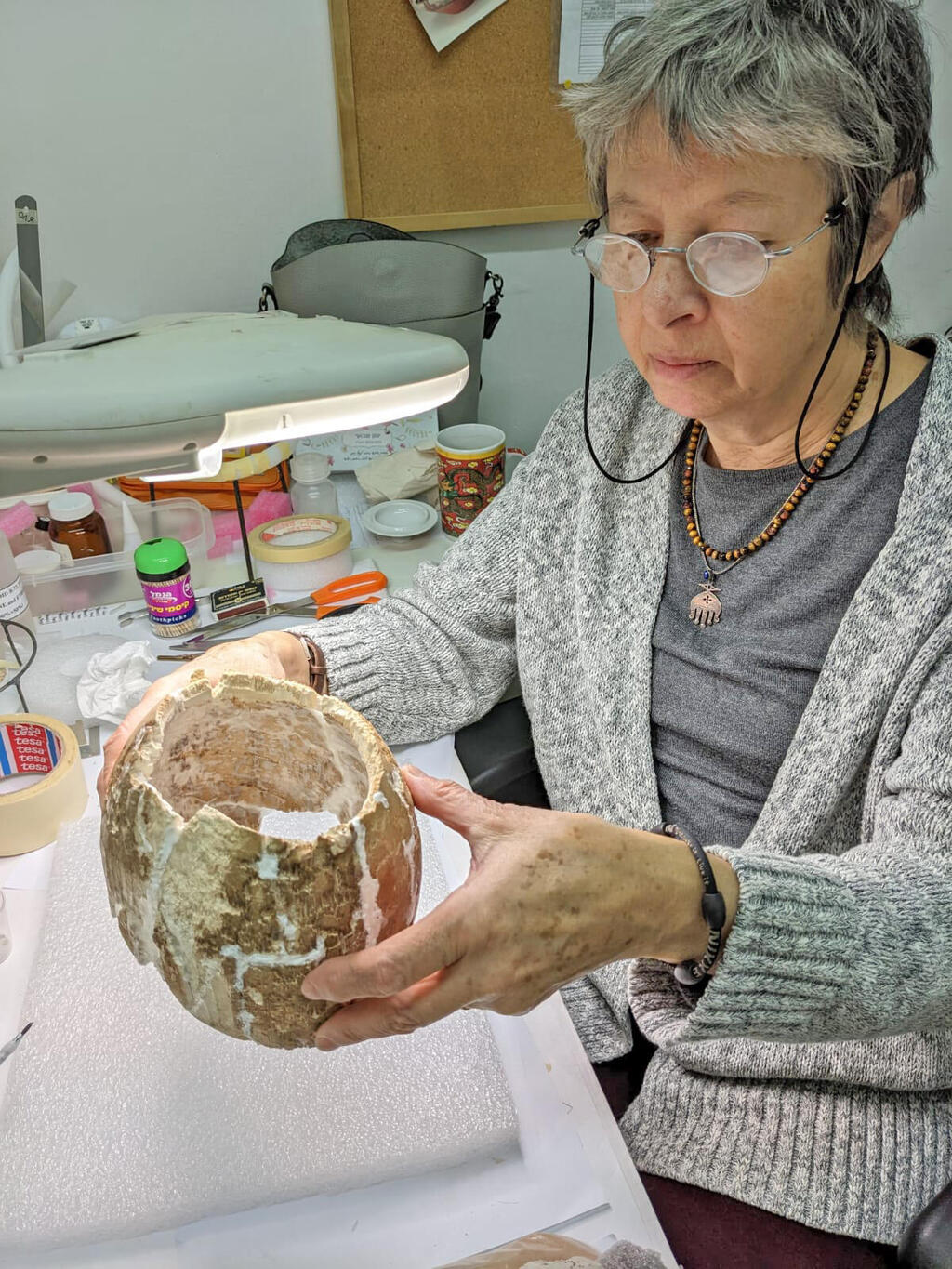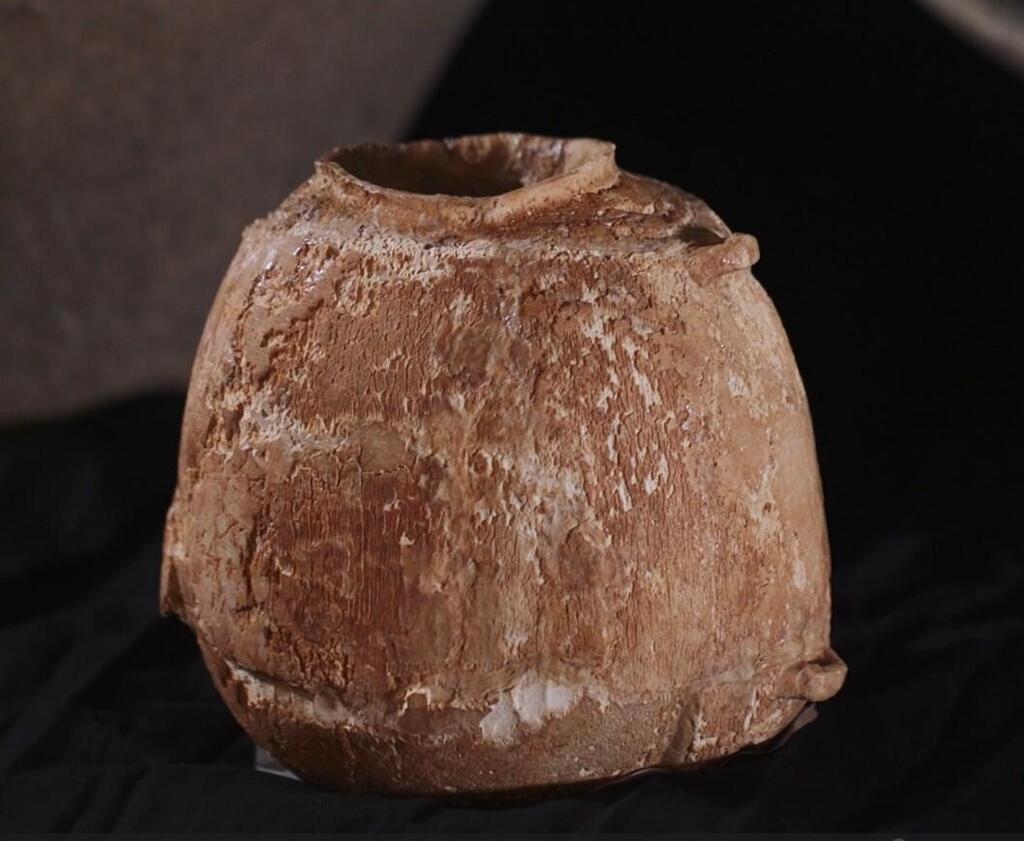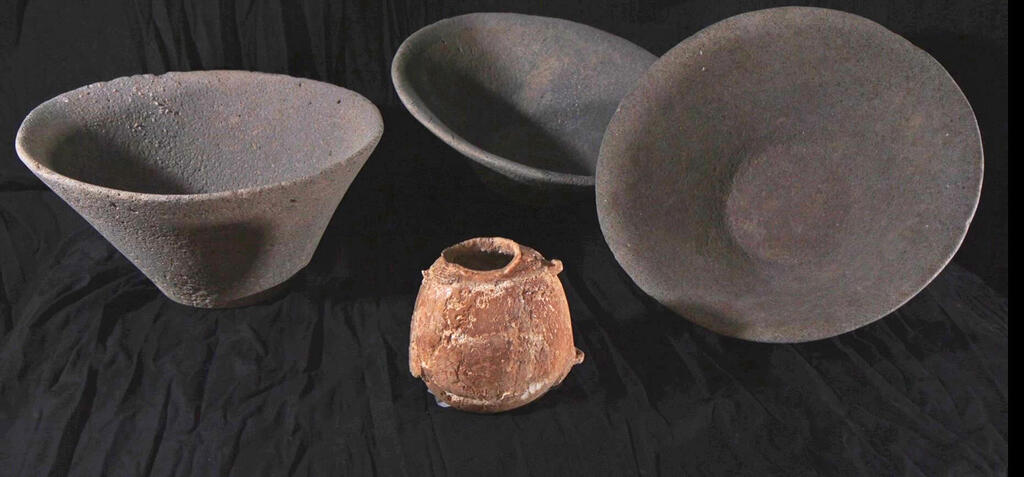An ivory vessel, dating back to the Chalcolithic period, was unearthed in archaeological excavations conducted by the Israel Antiquities Authority near Be'er Sheva. The rare artifact demonstrates the trade relations between the Land of Israel and ancient Egypt 6,000 years ago. The Antiquities Authority said that this is the first time such an artifact was found in our region. It was discovered broken and was reassembled through a complex process.
The Antiquities Authority unearthed an ancient settlement during an archaeological excavation, including underground chambers carved into the loess soil. Antiquities Authority archaeologist Emil Eljam noticed the edge of the ancient jug while carrying out final measurements.
Following the discovery, the excavation was expanded, revealing three large and impressive bowls. Two bowls were placed under the third as a kind of cover. When the top bowl was removed, it was revealed to be covering a bowl full of dirt, which were fragments of ivory inside.
"The manner in which the bowls were arranged indicates that the ivory vessel, which was already broken, was deliberately buried in a meticulous cache, indicating its apparent significance," explained Dr. Ianir Milevski, former Head of the Prehistoric Branch at the Archaeological Research Department of the Israel Antiquities Authority. "It is common in research that the buried or hidden figurines and broken vessels were done as part of ritual and cultic activities."
4 View gallery


The jug before it was reassembled
(Photo: Lanir Milevski, Israel Antiquities Authority)
Dr. Milevski added, "The size of the exposed vessel, about 20 cm, is remarkable and exceptional in its design. The small handles on its sides are symmetrically shaped, one above the other, with two handles positioned by the neck of the vessel, and two additional handles placed near its base."
After the initial exposure, the excavation managers, Avishai Levy-Hevroni and Martin David Pasternak of the Antiquities Authority, took the vessels and their contents to the Jay and Jeanie Schottenstein National Campus for the Archaeology of Israel. Dr. Ianir Milevski and Dr. Liore Koltsak-Horwitz of the Hebrew University of Jerusalem helped the team determine that the vessel was made of ivory.
"The discovery contributes to our understanding of the Chalcolithic period and the cultural and trade connections of the region with neighboring and distant cultures," said the researchers. "One of the interesting questions regarding the vessel," added Levy-Hevroni and Dr. Ianir Milevski, "is whether it was brought here already finished, or if the elephant tusks were brought to the land and crafted into a vessel by a local artisan."
4 View gallery


The preservation of the rare vessel
(Photo Ianir Milevski, Israel Antiquities Authority)
They further explained, "The vessel is well-made, maximizing the use of the ivory, a precious material. If the vessel was made locally, it indicates a high level of craftsmanship that existed here, familiarity with working with ivory, as well as knowledge of the anatomy of an elephant."
Further tests will help determine the species of the elephant, where it originated, and even what it ate. The vessel will be presented for the first time on Thursday in Jerusalem as part of the Israel Prehistoric Society conference. The conference will be held at the Jay and Jeanie Schottenstein National Archaeological Campus, showcasing new discoveries from recent prehistoric excavations conducted in Israel.




